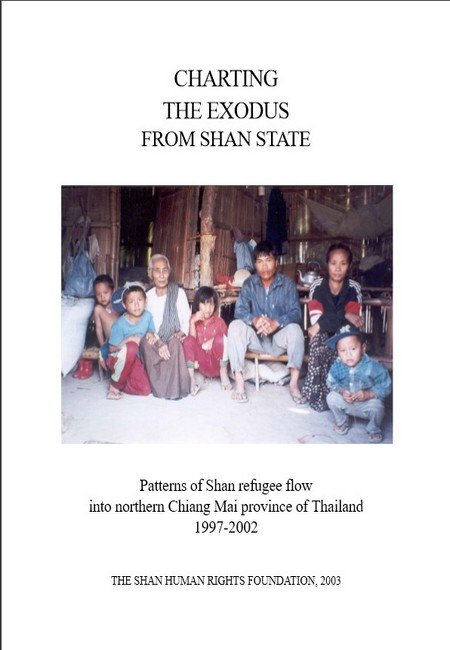Update by the Shan Human Rights Foundation
May 30, 2003
CHARTING THE EXODUS FROM SHAN STATE
SUMMARY
This report gives quantitative evidence in support of claims that there has been a large influx of Shans arriving into northern Thailand during the past 6 years who are genuine refugees fleeing persecution and not simply migrant workers. This data was based on interviews with 66,868 Shans arriving in Fang District of northern Chiang Mai province between June 1997 and December 2002.
The data shows that almost all the new arrivals came from the twelve townships in Central Shan State where the Burmese military regime has carried out a mass forced relocation program since March 1996, and where the regime’s troops have been perpetrating systematic human rights abuses against civilian populations.
Higher numbers of arrivals came from townships such as Kunhing where a higher incidence of human rights abuses has been reported. Evidence also shows increases in refugee outflows from specific village tracts directly after large-scale massacres were committed by the regime’s troops.
The consistently high flows of new arrivals recorded between 1997 and 2002, ranging between approximately 8,000 and 15,000 each year, are much higher than the annual influx of Shan migrant workers into Fang prior to 1996, which according to estimates of local residents did not exceed approximately 4,000. The monthly totals show that there is no seasonal pattern to the inflows, unlike for migrant workers, who prior to 1996 would mostly come from Shan State to work in Thailand during the dry season months of January to May.
47 % of the arrivals are 17 years and under, or 45 years and over; in other words they are fleeing as entire families, unlike typical migrant workers. There are also almost equal numbers of men and women. Prior to 1996, according to Fang residents, most migrant workers from Shan State would be adult men between the age of 20-40, who would come to Thailand without dependents in order to work and save money.
PDF Files:


